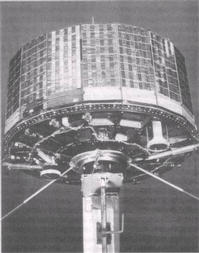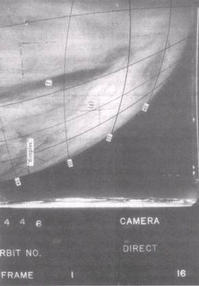


Memories of the Bureau, 1946 to 1962
Foreword
Terminology
Prologue
Preface
Chapter 1: The Warren Years, 1946 to 1950
Chapter 2: International Meteorology
Chapter 3: The Timcke Years, 1950 to 1955
Chapter 4: A Year at the Massachusetts Institute of Technology
Chapter 5: The Dwyer Years, 1955 to 1962
Leonard Joseph Dwyer—A Complex Character
Reorganising the Bureau
Public Weather Services
Forecasts for the General Public
Importance of Radio Stations
The Advent of Television
Automatic Telephone Forecast Service
Beacons
Wording and Verification of Forecasts
Warnings
Services for Aviation
Atomic Weapons Tests
Atomic Weapons Tests—Mosaic G1 and G2
Atomic Weapons Tests—Buffalo 1, 2, 3 and 4
Atomic Weapons Tests—Operations Antler, 2 and 3
Atomic Weapons Tests—Minor Trials
Instruments and Observations
Radiosondes
Radar/Radio Winds and Radar Weather Watch
Automatic Weather Stations
Sferics
Meteorological Satellites
Telecommunications
Tropical Cyclones
Bureau Conference on Tropical Cyclones
International Symposium on Tropical Cyclones, Brisbane
Hydrometeorology
Design of Water Storages, Etc
Flood Forecasting
Cloud Seeding
Reduction of Evaporation
Rain Seminar
Cloud Physics
Fire Weather
Research and Special Investigations
International Activities
The International Geophysical Year
The Antarctic and Southern Ocean
International Symposium on Antarctic Meteorology
International Antarctic Analysis Centre
ADP, EDP and Computers
Training
Publications
Management Conference
Services Conference
CSIRO and the Universities
Achievements of the Dwyer Years
Chapter 6: A Springboard for the Future
Appendix 1: References
Appendix 2: Reports, Papers, Manuscripts
Appendix 3: Milestones
Appendix 4: Acknowledgements
Appendix 5: Summary by H. N. Warren of the Operation of the Meteorological Section of Allied Air Headquarters, Brisbane, 1942–45
Endnotes
Index
Search
Help
Contact us

Meteorological Satellites (continued)
Harry Wexler was the epitome of what I considered to be the perfect scientist. His enthusiasm for the wonders of the atmosphere was such that it is best described as effervescent. His eyes sparkled and his arms waved as his voice echoed his passion for the subject. But, like any good scientist, while carrying the vision of the possibility of future dramatic developments in the knowledge of the atmosphere and its ways he was careful to emphasise the magnitude of the unknown and the care needed in carefully evaluating gains made.In showing the silent black-and-white film to Robbie and me Harry provided a voice commentary which could only be described as lyrical. There was no way that a viewer or listener could remain unenthusiastic. In my case the sight of the film was enough to convince me of the enormous potential of satellite meteorology, although there were some northern hemisphere meteorologists in the early days of satellite meteorology whose enthusiasm was somewhat lukewarm. My enthusiasm must have been readily evident to Harry as he was eager to have converts to his cause. The result was that he welcomed my support and repaid it by giving us favoured treatment in providing us with information on and photographs from the early satellites.
Tiros I, the first meteorological satellite, was placed into orbit on 1 January 1960 just two months after the first meeting of our Panel in Geneva. Issue No 46 of Weather News in May 1960 describes it as shaped like a pillbox, about 42 in (107 mm) in diameter, 19 in (28 cm) high and weighing 270 Ibs (120 kg). At a height of about 640 km above the Earth and circling every 90 minutes between 50°N and 50°S it was programmed to photograph on command. These photographs were read out when the satellite passed over a monitoring station in the US.


Harry kindly agreed to airmail me photographs taken in the Australian region and I still have over 70 photographs taken on orbits 444, 445 and 446 on 2 May 1960.
People in Bright Sparcs - Dwyer, Leonard Joseph
 |
Bureau of Meteorology |  |
© Online Edition Australian Science and Technology Heritage Centre and Bureau of Meteorology 2001
Published by Australian Science and Technology Heritage Centre, using the Web Academic Resource Publisher
http://www.austehc.unimelb.edu.au/fam/1060.html